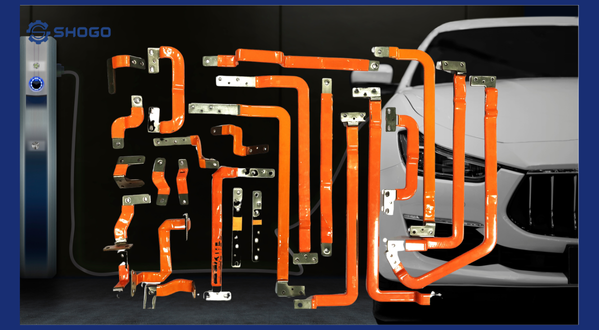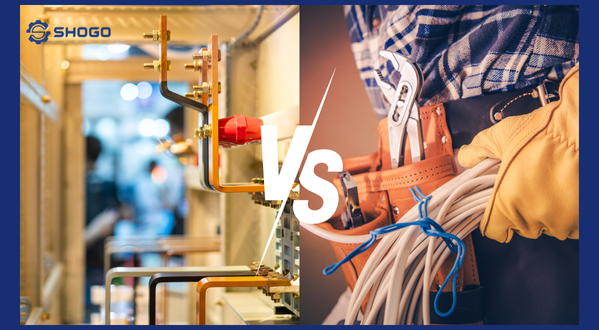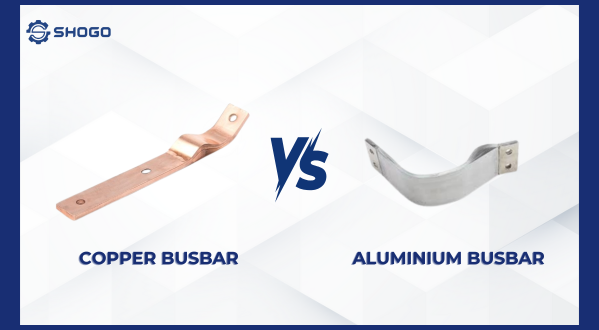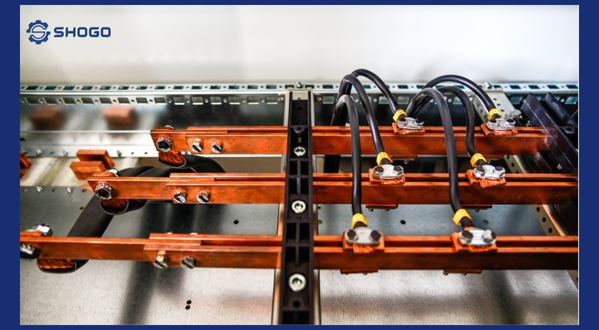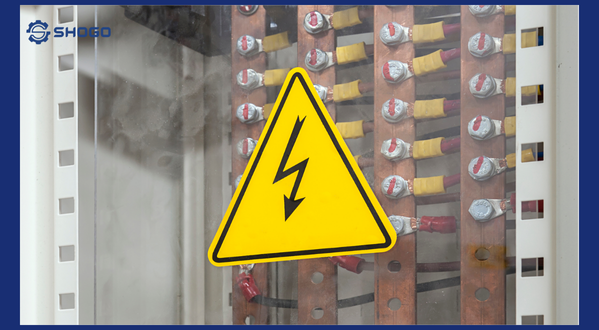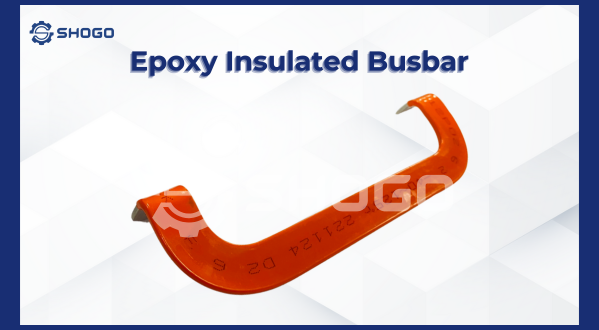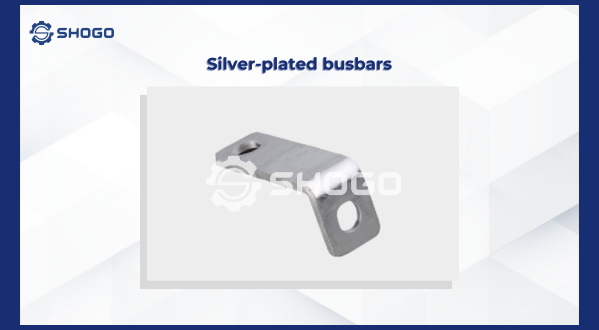
1. Introduction
A silver-plated busbar is a conductor bar that has a thin layer of silver plated onto its surface. This process enhances the physical and chemical properties of the busbar, expanding its applications across various industries.
The silver plating plays a crucial role in improving conductivity, corrosion resistance, and aesthetics. Due to these outstanding advantages, silver-plated busbars find extensive use in electronics, manufacturing, jewelry, and other fields.
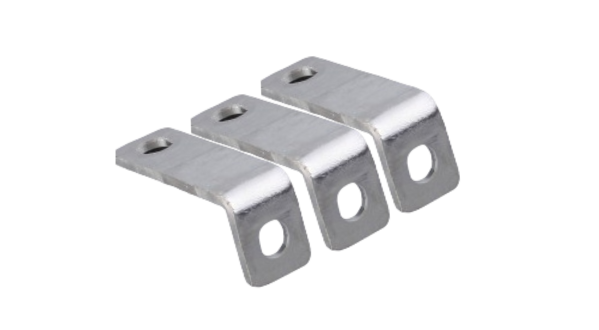
2. Advantages of Silver-Plated Busbars
- High conductivity: Silver is one of the best electrical conductors, second only to copper. The silver plating significantly enhances the conductivity of the busbar, ensuring optimal electrical energy transmission.
- Excellent corrosion resistance: Silver has excellent resistance to oxidation and chemical agents. The silver plating protects the busbar from corrosion, extending its lifespan and ensuring stability in harsh environments.
- Aesthetics: The shiny surface of silver adds elegance and sophistication to products. Silver-plated busbars are commonly used in jewelry and high-end household items.
- Other advantages:
- Excellent solderability
- Effective oxidation resistance
- Toughness
3. Silver Plating Process
The silver plating process involves the following steps:
- Surface preparation: The busbar surface is cleaned and treated to remove impurities, creating a suitable base for the plating.
- Electroplating: The busbar is immersed in a silver salt solution and an electric current is applied. Silver ions migrate to the busbar surface and adhere to it, forming the plating.
- Inspection and finishing: The plating thickness, adhesion, and uniformity are inspected. The plated busbar undergoes finishing processes such as polishing and rinsing.
Common silver plating methods:
- Electroplating: The most common method, allowing precise control over plating thickness.
- Electroless plating: Does not require electricity, suitable for complex-shaped components.
- Vacuum plating: Produces a thin, uniform, and very smooth plating.
4. Applications of Silver-Plated Busbars
- Electronics:
- Used as electrical contacts in electronic circuits.
- Used in the production of electronic components like capacitors and resistors.
- Used in measurement devices and sensors.
- Industry:
- Used in industrial equipment and machinery.
- Used as electrical conductors in electrical devices.
- Jewelry:
- Used in the production of bracelets, necklaces, and rings.
- Used as decorative elements in other products.
- Other applications:
- Used as corrosion-resistant materials in harsh environments.
- Used in medical and dental applications.
5. Quality Standards of Silver-Plated Busbars
The quality of silver-plated busbars is evaluated based on the following standards:
- Plating thickness: Ensures sufficient thickness for protection and performance enhancement.
- Adhesion: The plating must adhere firmly to the busbar surface.
- Brightness: The plating surface should be shiny and uniform.
- Silver purity: Ensures the silver content in the plating meets the standards.
6. Choosing the Right Silver-Plated Busbar
When selecting a silver-plated busbar, consider the following factors:
- Application: The intended use will determine the required quality and size of the busbar.
- Budget: The price of a silver-plated busbar depends on the plating thickness, size, and material.
- Quality requirements: Ensure the product meets technical and safety standards.
7. Conclusion
Silver-plated busbars offer numerous advantages and are widely used in various fields. With their high conductivity, excellent corrosion resistance, and aesthetic appeal, silver-plated busbars have solidified their position in industrial and everyday applications.





